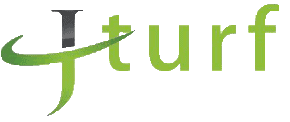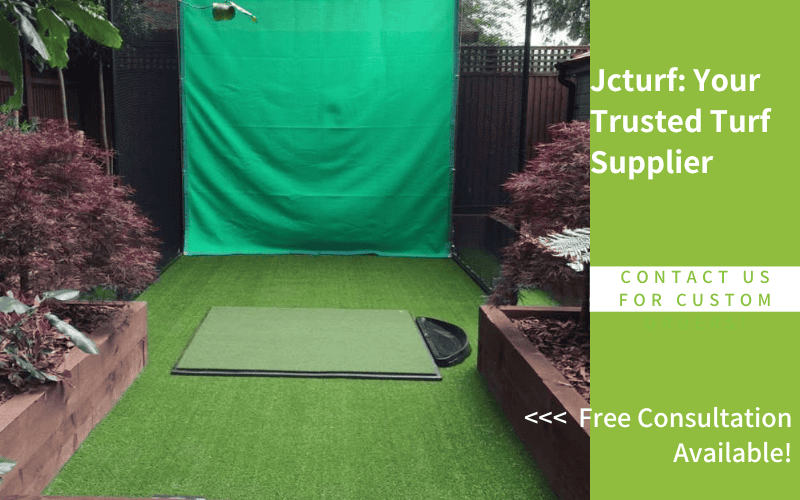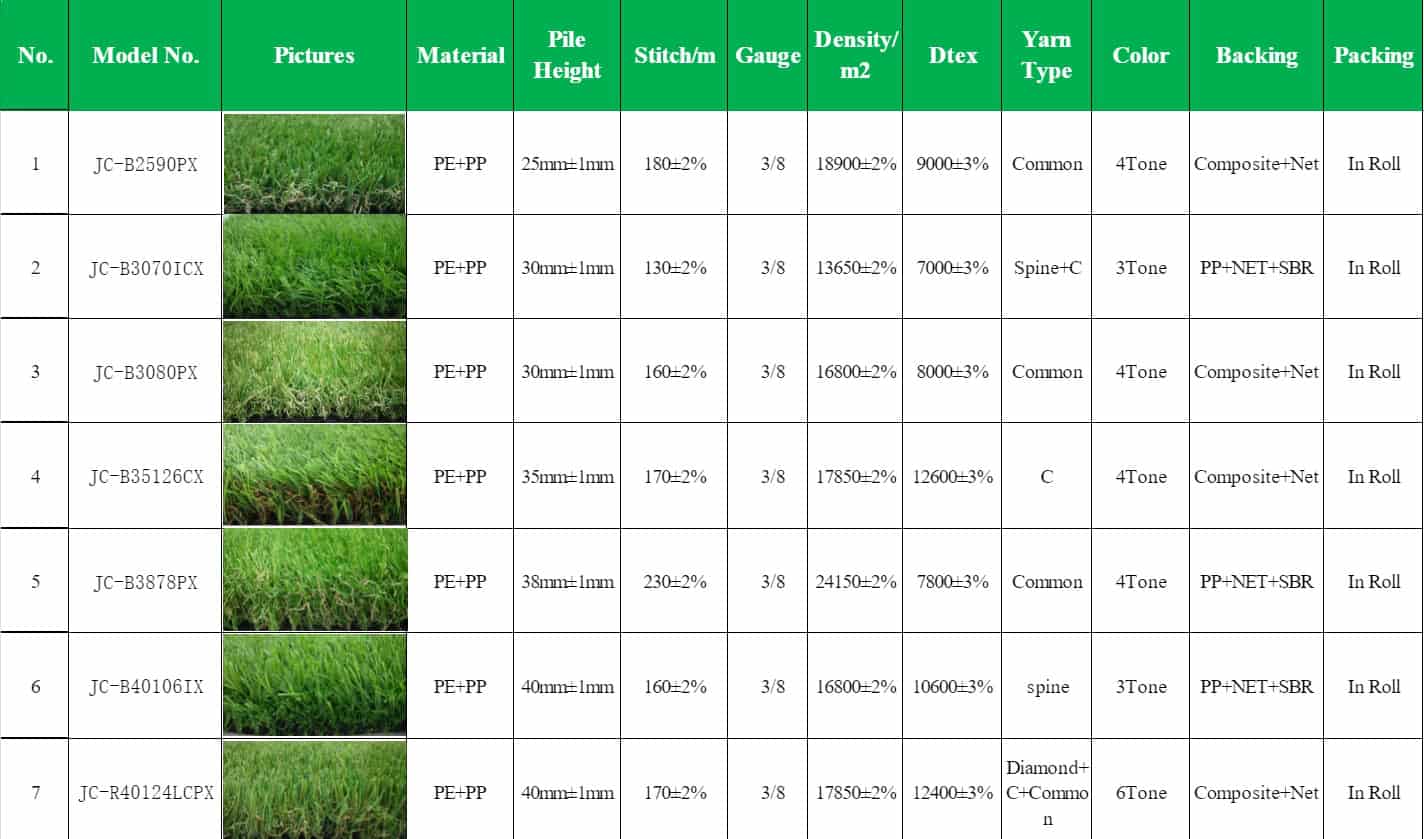Selecting the appropriate batting cage turf has the potential to greatly influence the standard of your practice drills. The best turf provides durability, consistent ball response, and safety, while being tailored to your specific needs.
In this guide, we’ll walk you through how to select the ideal turf based on usage, location, budget, and performance requirements. We’ll also cover important factors like installation, turf types, and maintenance to ensure your turf lasts and performs at its best.
What Is Batting Cage Turf?
Batting cage turf is a durable, synthetic surface for baseball/softball batting cages, mimicking grass. Made from nylon or polyethylene, it’s low-maintenance, weather-resistant, and cushioned for safety. With padded backing, it absorbs impact, offers traction, and handles heavy use. Available in various colors and thicknesses for indoor/outdoor cages.
Turf for Batting Cage Benefits
1. All-Weather, Year-Round Playability: Artificial turf drains quickly and stays usable after rain, eliminating mud and delays. It ensures uninterrupted training regardless of weather—ideal for both indoor and outdoor cages.
2. Low Maintenance with Cost Savings: No watering, mowing, fertilizing, or pest control is needed. Though initial costs are higher, reduced upkeep and water usage result in long-term savings.
3. Safety and Surface Consistency: Turf with shock-absorbing layers reduces slip and impact injuries. It also provides a stable, even surface, ensuring predictable ball bounce and secure footing.
4. High Durability: Engineered for repeated impact and heavy foot traffic, artificial turf resists wear and tear, offering long-term reliability under intense training conditions.
5. Versatility: Beyond batting cages, turf suits bullpens, coaches’ boxes, locker rooms, and general sports training, making it a flexible option for multi-use facilities.
6. Environmentally Friendly: Turf reduces water consumption and eliminates harmful chemicals, supporting a more sustainable and eco-conscious facility setup.
How to Choose the Best Turf for Batting Cage?
Selecting the ideal batting cage synthetic turf and setup requires balancing usage, location, budget, and performance needs.
Material
Thick (1.5–2 inches), durable nylon turf is ideal for high-traffic areas(e.g., training centers) and frequent use. It resists wear from repeated foot traffic and ball impact.
Thinner (0.5-1 inch) polyethylene turf is a more budget-friendly choice that still performs well outdoors, offering good durability with better weather resistance.
Compared to natural grass—which wears quickly and demands constant upkeep—synthetic turf is far more practical for both indoor and outdoor cages.
Pile Height and Face Weight
Pile Height affects both feel and durability. Shorter piles are more wear-resistant, while longer piles offer a more natural look.
Face Weight (oz/sq yd) indicates turf density and longevity. For batting cages, choose a minimum of 30 oz, with heavier options offering greater resilience.
Types of Batting Cages
Indoor batting cage turf: Prioritize turf with strong backing for concrete/asphalt bases; UV resistance is less critical.
Outdoor batting cage turf: Select UV-resistant, weatherproof turf with good drainage for rain and sun exposure.
Portable Cages: Movable, lightweight setups for home/events, using thin turf or mats.
Commercial Cages: High-traffic, professional setups with premium turf and pitching machines.
Backyard Cages: Small, budget-friendly, using affordable turf or grass.
Safety
For youth or training-focused cages, look for padded backing (foam/rubber) to reduce joint strain and ensure traction to prevent slipping.
Budget
While nylon turf has a higher upfront cost, its longevity often makes it more cost-effective over time.
If on a tighter budget, poly turf can be a good compromise, especially when paired with proper drainage and padding.
What Are the Costs of Batting Cage Turf?
The price of setting up an artificial turf for batting cages can range from $1.4 to $5 per square foot depending on the quality of turf chosen, installation complexity, and ground preparation.
Typical Cost Ranges
Budget Turf (Unpadded, Polyethylene): $1.00–$2.00 per sq ft. Suitable for low-use backyard or outdoor cages.
Mid-Range Turf (Padded, Polyethylene/Nylon Blend): $2.00–$3.50 per sq ft. Ideal for moderate-use indoor/outdoor cages.
Premium Turf (Padded, Nylon): $3.50–$5.00 per sq ft. Best for high-traffic commercial or professional cages.
Used Turf: $0.75–$1.50 per sq ft. Cost-effective for budget projects but may require inspection for quality.
Installation Costs: $0.50–$2.00 per sq ft for professional installation; DIY costs include adhesive ($50–$100 per project) and tools.
Key Factors Affecting Cost
Material Type: Nylon is durable, spike-resistant, and suitable for high traffic, but more expensive ($1.50-5.00 per square foot); polyethylene is soft, economical, and suitable for medium use ($1.00-3.50 per square foot).
Padding: Padded turf (with foam or rubber backing) adds comfort and safety, increasing costs by $0.50–$2.00 per sq ft compared to unpadded turf. Essential for indoor cages or heavy use.
Face Weight and Pile Height: Higher face weight (30–48 oz) and pile height (0.5–2 inches) indicate thicker, more durable turf, costing more. Lower face weight (17–30 oz) is cheaper but less robust.
Size of the Cage: Standard batting cage sizes range from 35’ x 12’ (420 sq ft) to 70’ x 15’ (1,050 sq ft). Larger cages increase total turf costs.
Custom Cuts: Common roll widths are 12’ or 15’, with lengths cut to fit (e.g., 35’, 55’, 70’). Pre-cut rolls are often more affordable, while custom cuts might incur additional costs.
Application: Whether the turf is used indoors or outdoors can significantly affect the cost. Indoor turfs often have an added liner, while outdoor turfs need to be UV-resistant and weatherproof, which can increase costs.
Installation: DIY installation saves money but requires tools (e.g., adhesive, seam tape). Professional installation adds $0.50–$2.00 per sq ft, depending on complexity and location.
New vs. Used Turf for Batting Cage: New batting cage artificial turf ranges from $1.00–$5.00 per sq ft. Used or leftover turf (e.g., from athletic fields) can be as low as $0.75–$1.50 per sq ft but may have wear or markings.
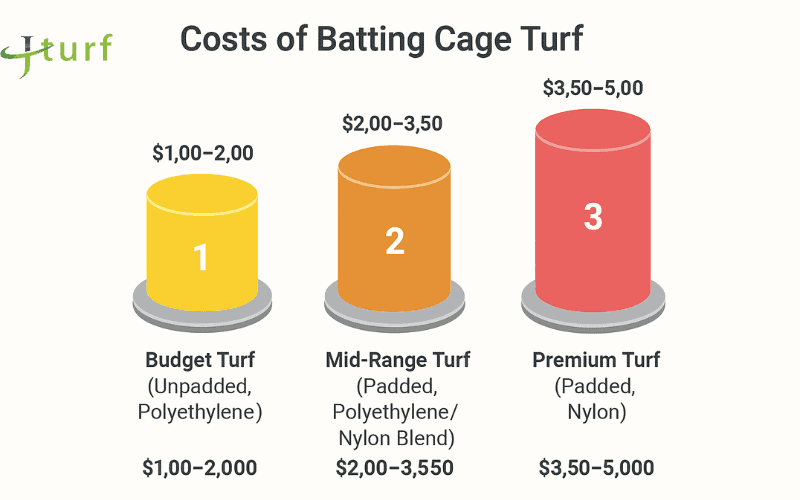
Installing Turf Batting Cages
Proper installation is critical for turf performance, safety, and longevity. The process varies slightly for indoor (concrete/asphalt base) and outdoor (gravel/soil base) cages but follows these general steps:
Tools and Materials Needed
- Turf roll (e.g., 12’ x 35’ or 15’ x 70’)
- Seam tape and turf adhesive (approx. $50–$100/project)
- Utility knife or carpet knife
- Measuring tape, chalk line
- Roller or tamper
- Broom or brush (for finishing)
- Optional:
- Crushed gravel base (3/16” or smaller, 2–4 inches for general, 4 inches recommended for drainage)
- Infill material (e.g., silica sand, rubber granules)
- Batting mats (for batter’s box protection)
1. Prepare the Base
Outdoor Installation:
- Clear the area: Remove sod, rocks, and debris.
- Establish drainage slope: Ensure a 1–2% grade, sloping outward from the center or to one side.
- Lay and compact base:
- Use at least 4 inches of compacted gravel (3/16” or smaller) for stability and drainage.
- Compact with a tamper or plate compactor to create a firm, level surface.
Indoor Installation:
- Inspect the concrete or asphalt base:
- Clean the surface thoroughly and patch any cracks.
- Ensure it’s dry and level for optimal adhesion and player safety.
2. Measure, Cut, and Lay the Turf
- Measure cage dimensions and mark the turf with a chalk line.
- Cut turf using a utility or carpet knife, ensuring clean, straight edges.
- Unroll the turf:
- Align all rolls in the same direction for a uniform look and fiber orientation.
- Allow to sit 1–2 hours outdoors to relax and adjust to ambient temperature.
3. Seam and Secure the Turf
- Join seams using turf seam tape and adhesive:
- Align the edges carefully and follow the turf’s stitch pattern.
- Press firmly for a seamless finish.
- Secure the turf:
- For outdoor: Use nails or landscape stakes along the perimeter and seams.
- For indoor: Fully glue down using turf adhesive.
- Use a roller to press the turf evenly into place.
4. Optional: Add Infill
- Infill improves ball bounce, turf stability, and cushion.
- Choose material: Silica sand, rubber granules, or a blend.
- Apply and distribute: Spread evenly and brush into the turf with a broom or power brush.
5. Final Inspection and Finishing Touches
- Trim any excess turf along edges or cutouts.
- Brush the surface to lift fibers for a natural look and better traction.
- Inspect seams and edges, and test bounce with balls for consistency.
- Add batting mats ($80–$90 for 6’ x 12’ nylon) in high-wear areas like the batter’s box.
Installation Costs
- DIY: $50–$100 for adhesive, seam tape, and tools. Labor is free but requires time and skill.
- Professional: $0.50–$2.00 per sq ft, adding $210–$840 for a 420 sq ft cage or $525–$2,100 for a 1,050 sq ft cage.
Tips for Success
- Outdoor Drainage: Slope the base slightly (1–2%) to prevent water pooling.
- Indoor Ventilation: Ensure good airflow during adhesive application to avoid fumes.
- Hire Professionals: For large or commercial cages, professional installation ensures precision and durability.
Maintaining Batting Cage Turf
Batting cage turf is popular for its durability and low upkeep, but routine maintenance helps extend its lifespan (typically 8–12 years for premium turf) and preserve surface quality.
Routine Care
- Debris Removal: Sweep or use a leaf blower weekly to remove leaves, dirt, and small debris.
- Brushing: Brush with a stiff broom or power brush every 2 weeks to keep fibers upright and avoid matting in high-traffic zones.
Cleaning
- Monthly Rinse: Hose down outdoor turf or use a damp mop indoors to remove dust and minor stains.
- Deep Cleaning: Annually, scrub with mild detergent and soft brush, then rinse thoroughly. Indoor turf can be wiped down.
- Odor Control: Use specialized turf cleaners or odor-neutralizers as needed, especially in enclosed or high-use spaces.
Spot Repairs & Inspection
- Check monthly for loose seams, edges, or tears.
- Use turf adhesive ($10–$20) for small fixes.
- Replace or cover worn areas—especially the batter’s box—with batting mats ($80–$90) to reduce wear and repair frequency.
Drainage & UV Protection
- Ensure proper drainage to avoid mold and water pooling.
- For outdoor turf, apply UV-protectant spray ($20–$50/gallon) every 1–2 years to prevent fading and fiber brittleness.
Natural Grass Maintenance
If using real grass (not generally recommended), more frequent and labor-intensive maintenance is required:
- Mowing: Regular cutting is needed to maintain consistent surface height.
- Watering: Especially in dry climates, frequent watering keeps grass healthy.
- Weed Control: Manual or chemical methods help prevent overgrowth.
- Fertilizing: Must be done cautiously to avoid overfeeding or surface damage.
- Drainage: Critical to prevent muddy or slippery conditions.
Batting Cage Turf Protection Tips
- Level Surface: Start with a flat, compacted base to prevent uneven wear.
- Edge Finishing: Leave extra turf when installing to allow for clean trimming.
- Seam & Edge Monitoring: Inspect regularly for lifting or damage.
- Footwear: Encourage rubber cleats over metal spikes to minimize turf wear.
- Wear Distribution: Rotate batter positions or practice zones to spread out traffic.
Maintenance Costs Overview
| Item | Estimated Cost Range |
| Routine Care | $50–$100/year (tools, cleaners) |
| Spot Repairs | $10–$50 (adhesives or patches) |
| Batting cage turf mats | $80–$90 (6’ x 12’ nylon) |
| Professional Cleaning | $0.10–$0.50/sq ft/year |
| Example: 420 sq ft cage | $42–$210/year |
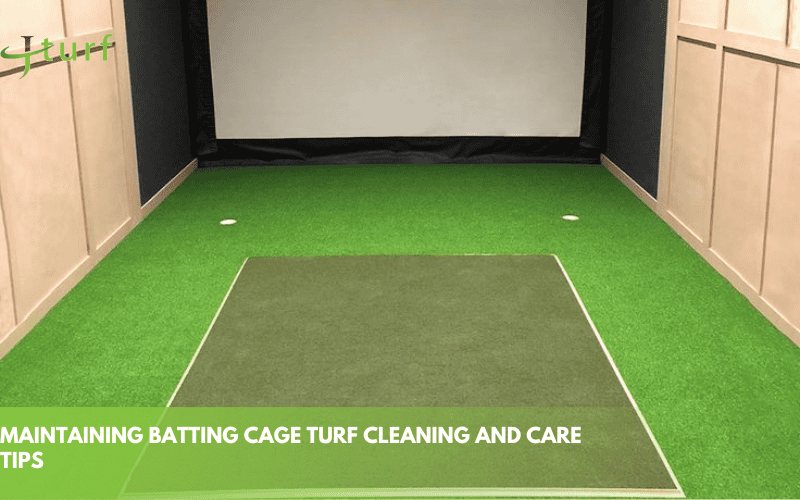
Additional Considerations for Batting Cage Turf
When choosing artificial grass for batting cages, there are a few extra factors that can affect performance and player experience.
Do Batting Cages Help with Hitting?
Batting cages, especially those with high-quality turf, provide consistent feedback for players. The turf ensures a uniform bounce, helping players develop muscle memory and improve their hitting techniques. Cages create a safe environment where players can focus on refining their skills without worrying about environmental factors like weather or uneven surfaces.
Baseball Turf Mats: What Are They and Do You Need One?
Baseball turf mats are portable synthetic grass mats used in batting cages. Unlike full turf installations, mats cover only specific areas like the hitting zone. Their simplicity in installation and dismantling renders them perfectly suited for small-scale or temporary arrangements. However, for long-term or high-traffic use, full turf installations are generally more durable and offer better performance.
Build a Better Batting Cage with Trusted Turf Manufacturer
Give your athletes the surface they deserve—with artificial turf batting cage engineered for serious training, lasting performance, and easier maintenance.
At JCturf, we manufacture premium batting cage turf and padding built to handle heavy use, consistent ball rebound, and long-term durability, trusted by schools, academies, and professional training centers worldwide.
Contact us today—let’s build a training field that brings out the best in every player.
